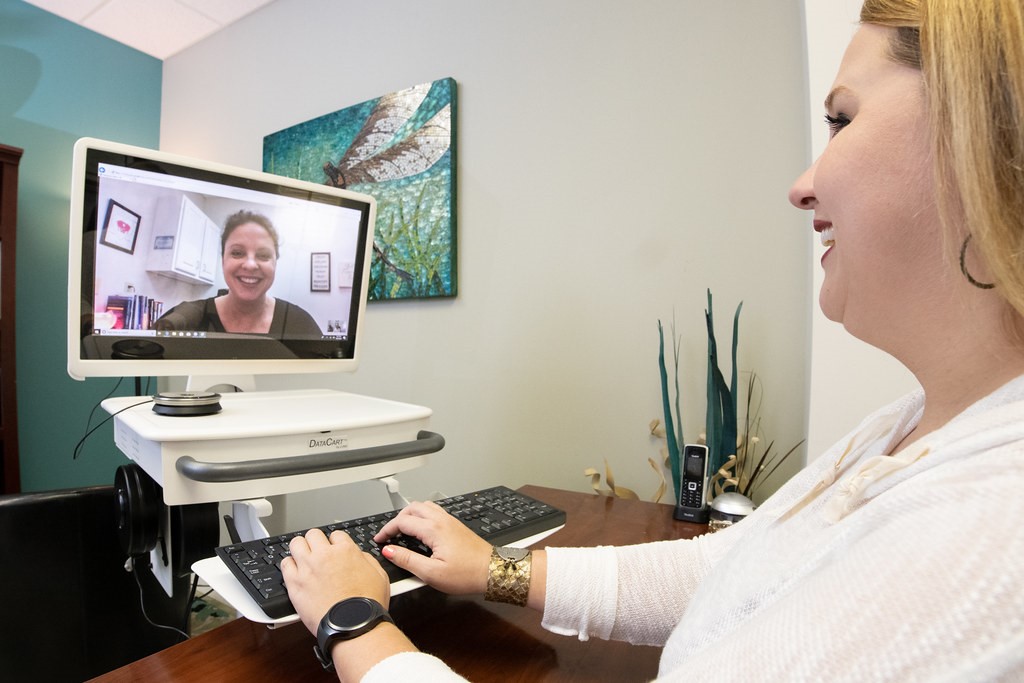Healthcare Agility in the Time of COVID-19
The healthcare world has faced a massive shift in recent months to focus on fighting the COVID-19 pandemic. The medical system has suffered unprecedented strain, and there has been global coordination in ways we have never before seen. Hospitals have transformed, healthcare workers have been thrown into unfamiliar work, and companies have created new supply chains, seemingly overnight. COVID-19 has been at the forefront of everyone's mind every day. Although these stressors have tested the limits of the medical system’s capacity to take care of patients, ingenuity and adaptability have prevailed in the wake of this crisis. As they navigate the changing landscape, people have been forced to approach problems and leverage resources in promising new ways for our future, post-pandemic world.
An impactful change that has arisen from the pandemic is the rapid growth of telemedicine. Telemedicine describes the platform that facilitates remote health-related services between doctors and patients over a secure online connection, according to the Medical Futurist. This technology service was first introduced to the public in 2010 but has had slow adoption. A recent US study showed that only about 18% of consumers had utilized such services. These services have not been widely used due to weak infrastructure to support the technology, lack of awareness, and lack of trust in its reliability. It has also been difficult to require both patients and doctors to adapt to this new care delivery model.

As many doctors and nurses have become heroes on the front lines treating Coronavirus patients, many other healthcare providers have been prohibited from seeing patients at all. Clinicians in orthopedic, gastroenterology, cardiology, ophthalmic, primary care, and many more medical fields deemed 'non-essential' or 'elective' have faced massive challenges. These clinicians have been forced to decline in-person appointments, leaving a wake of patients either going untreated or transitioning to virtual appointments. Telemedicine is bridging the gap to minimize potentially dangerous human contact while facilitating patient diagnosis and treatment without leaving home. Telemedicine technology companies have seen the number of appointments conducted through their platforms as much as double or triple since January.
Although this has been a forced change on both patients and providers, fast adoption could mean increased access to healthcare, even post-pandemic. Doctors will become more comfortable using telemedicine platforms, and investment in infrastructure will expand usage. As telehealth engagement evolves, doctors will be able to reach a broader patient base than when visits were limited to in-person.
Another astounding response to the COVID-19 disruption is how manufacturers have expanded capacity to meet skyrocketing demand for N95 face masks, protective gear, hand sanitizer, ventilators, and other essential items used to fight the virus. The WHO estimates that the US healthcare system will need up to 3.5 billion N95 respirator masks over the course of the year fighting the Coronavirus pandemic.
3M Company is one of the few companies that manufacture these medical-grade masks and anticipate ramp-up production capabilities in response to the SARS epidemic in 2002-03. The company quickly doubled production since the virus first arose in China during December 2019. They began running production 24/7 and investing heavily in expanded in labor and equipment. 3M is now producing record numbers of about 100 million N95 masks per month. With continued investment in additional capacity, the company estimates they’ll hit 2 billion masks produced within 12 months.
In addition to companies expanding their current capabilities, other companies have shifted their production completely to produce these high demand items, often in very creative ways. Ford, the auto manufacturer, began producing ventilators in collaboration with GE Healthcare. Ventilators are lifesaving machines that help the lungs work when they are fighting a disease. COVID-19 can severely affect the lungs, causing oxygen levels to drop dangerously low. Ventilators mechanically push air with increased oxygen levels into the lungs, doing the work for the lungs, which helps give the body a better chance at healing. Ford automotive company recognized that ventilators require air pressurizing equipment, much like that found in a car’s air cooling and filtering systems. With leadership and industry expertise from both Ford and GE Healthcare, the partnership creatively repurposed components of a car’s cooling and air filtering systems to design medical-grade ventilators. They can now produce about 30,000 ventilators monthly.
The rise of such innovative healthcare delivery systems and impressive manufacturing agility confirm the ingenuity and resourcefulness that has resulted from the coronavirus pandemic. As we continue to navigate the many unknowns about COVID-19, we will also continue to refine safety measures and patient care protocols. Nobody can say what the medical landscape will look like after the pandemic subsides. Still, the healthcare system will surely be more responsive and prepared, thanks to the people and companies that have rallied in the time of COVID-19.



